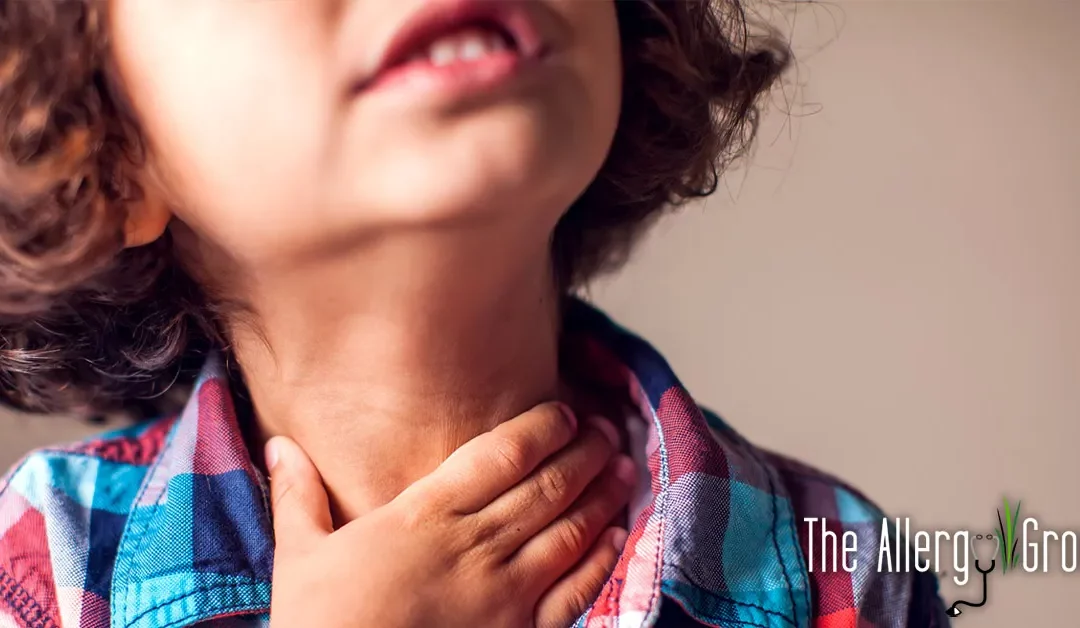Eosinophilic Esophagitis
Have you been having trouble swallowing recently due to pain in your throat? Has this made eating difficult for you? Maybe you’ve noticed food getting stuck in your throat or your child’s throat. If this sounds familiar, you may be suffering from a condition called Eosinophilic Esophagitis.
What is Eosinophilic Esophagitis?
Eosinophilic Esophagitis is an allergic inflammatory condition affecting the esophagus which causes a buildup of white blood cells along the lining of the throat. Most commonly, it is a reaction to certain foods, allergens, or acid reflux which can, over time, damage the tissue of the esophagus.
While this chronic immune disease was only identified within the last two decades, it is now considered a major cause of gastrointestinal illness.
What Causes Eosinophilic Esophagitis?
Although the exact cause of Eosinophilic Esophagitis is not yet known, many doctors believe it is connected to an immune response to specific foods within the body, as many patients present with food allergies or environmental allergies at the time of diagnosis.
EoE risk factors commonly include:
Climate
If you live in a cold or dry climate your chances of presenting with Eosinophilic Esophagitis are greater than those living in other climates.
Season
Similarly to climate, symptoms of the disease are more likely to present themselves during the spring and fall when pollen and other allergens are at their height.
Allergies
People with food allergies or environmental allergies are the most common group to present with symptoms. Those suffering from asthma, atopic dermatitis or a chronic respiratory disease are also more likely to suffer from Eosinophilic Esophagitis.
Gender
Eosinophilic Esophagitis presents more often in men than in women.
Family History
Doctors now believe there may be a genetic component to Eosinophilic Esophagitis so if someone in your family has been diagnosed with the condition, you may carry a higher risk yourself.
What are the Symptoms of Eosinophilic Esophagitis?
Though once thought to be a childhood disease, Eosinophilic Esophagitis has recently become prevalent in adults as well with as many as 1 in every 2000 presenting with symptoms. While many of the symptoms of the disease are similar, there are some subtle differences between adults and children presenting with the condition.
Adults
- Difficulty swallowing
- Chest pain or persistent heartburn
- Upper abdominal pain
- Little to no response when taking medication for gastroesophageal reflux disease (GERD)
- Throwing up undigested food or food frequently becoming stuck in the esophagus after swallowing.
Children
- Difficulty feeding infants and difficulty getting older children to eat
- Frequent vomiting
- Abdominal pain
- Difficulty swallowing or food frequently getting stuck in the esophagus
- No response to GERD medication
- Failure to thrive
Diet Management
For many patients, removing problematic foods from their diet is one of the easiest ways to handle the inflammation and find relief from the condition. Problematic foods often include :
- Milk
- Wheat
- Eggs
- Soy
- Peanuts and/ or Tree nuts
- Fish and Shellfish
Medication
There are two main medications utilized in controlling Eosinophilic Esophagitis:
Acid Suppressors
When used in conjunction with diet management and other medications, acid suppressors provide relief for the burning reflux symptoms.
Topical Steroids
When swallowed through an asthma inhaler, topical steroids can provide relief and put Eosinophilic Esophagitis into remission.
Call your Allergist
If you or your loved ones are experiencing any of the symptoms of Eosinophilic Esophagitis, contact The Allergy Group today to make an appointment and begin the process of finding relief to avoid any lasting damage to your esophagus. We have offices through the Treasure Valley and experienced, caring staff ready to help alleviate your symptoms.


